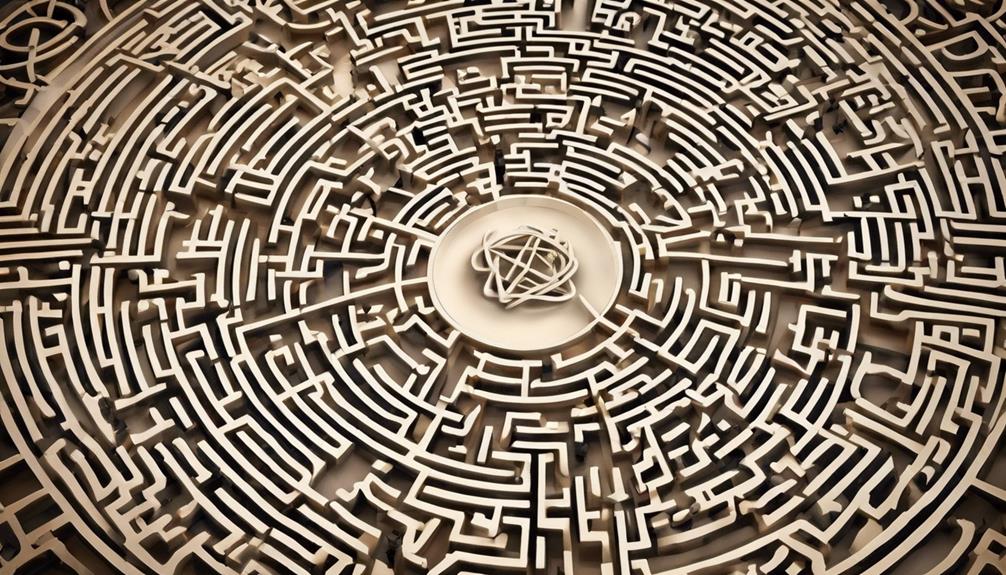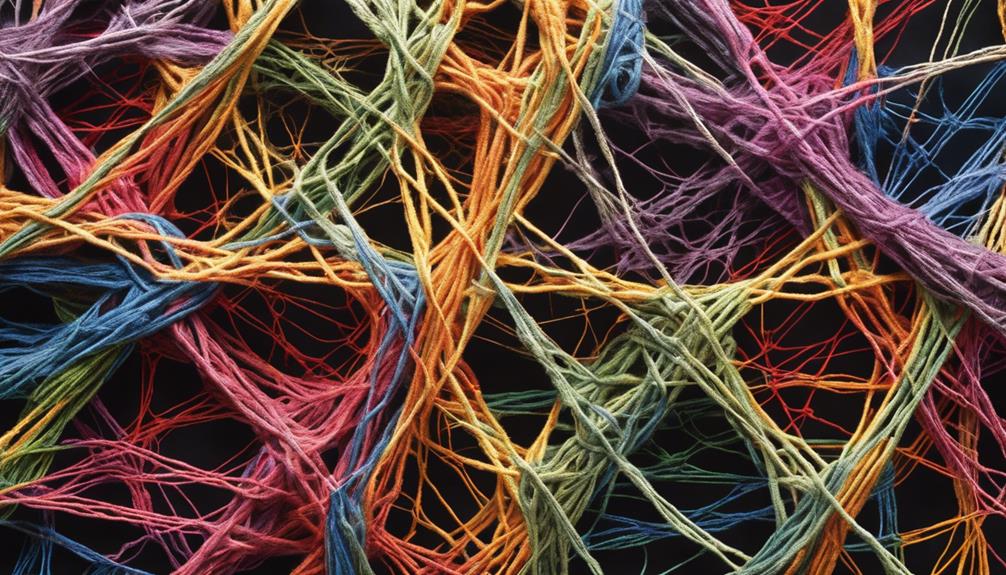Delving into the complex maze of childhood wounds attributed to the Enneagram can seem like untangling a rich tapestry of concealed feelings and forces that form the essence of who we are.
As we navigate the depths of our Enneagram types and their intertwining with past experiences, a roadmap emerges, guiding us towards profound self-discovery and healing.
Each step in this transformative journey unveils layers of insight and empowerment, urging us to confront old wounds with compassion and courage.
The path to healing Enneagram childhood wounds beckons us to embark on a profound voyage of self-understanding and growth, promising a profound shift in perspective and a newfound sense of wholeness.
Key Takeaways
- Acknowledge and address your Enneagram type's unique childhood wound for healing and transformation.
- Embrace tailored self-care practices to cultivate self-awareness and self-acceptance.
- Engage in diverse healing modalities to aid in understanding and addressing your childhood wounds.
- Seek support from loved ones or professionals to facilitate healing and growth.
Understanding Enneagram Childhood Wounds
What emotional impacts from childhood shape the personality traits of individuals according to the Enneagram framework?
Childhood wounds play a pivotal role in shaping the Enneagram types and personality traits we exhibit. The Enneagram framework suggests that each type harbors a specific childhood wound stemming from early emotional hurt. These wounds act as the foundation for our behaviors, thought patterns, and emotional responses. They're the lenses through which we perceive the world, influencing our quest for inner peace and fulfillment.
Understanding these childhood wounds is crucial in unraveling the complexities of our Enneagram types. By delving into the origins of our wounds, we gain insight into why we exhibit certain personality traits and tendencies. Whether it be the fear of abandonment for Type Two or the sense of worthlessness for Type Four, these wounds shape our perception of ourselves and others.
Recognizing and addressing these wounds is a vital step towards achieving inner peace and personal growth. By acknowledging our childhood wounds, we pave the way for healing and transformation in our Enneagram journey.
Identifying Your Enneagram Type's Wound

As we explore the Enneagram framework further, understanding and identifying your Enneagram type's specific childhood wound is essential for unraveling the intricacies of your personality traits and behaviors. Each Enneagram type carries a unique imprint from their childhood experiences, shaping how they interact with the world. By delving into the core wounds associated with each type, we can gain profound insights into our own psyche and behavior patterns. Below is a table outlining the childhood wounds of each Enneagram type:
| Enneagram Type | Childhood Wound |
|---|---|
| Type 1 | Feeling inherently flawed or corrupt |
| Type 2 | Believing they are unlovable |
| Type 3 | Feeling insignificant or worthless |
| Type 4 | Experiencing a sense of abandonment |
Identifying your Enneagram type's childhood wound is a crucial step towards personal growth and healing. These wounds, rooted in early age experiences, have a lasting impact on our lives, influencing our beliefs, fears, and coping mechanisms. By recognizing and addressing these wounds, we can embark on a journey of self-discovery and transformation.
Healing Strategies for Each Enneagram Type
Healing from childhood wounds associated with each Enneagram type involves tailored strategies that focus on fostering self-awareness and embracing personal growth. For Type Ones, who may have experienced childhood wounds from overly strict environments, it's essential to provide guidance on acknowledging their goodness and embracing self-compassion. By shifting their focus towards self-acceptance and forgiveness, Type Ones can heal past wounds and cultivate a more balanced sense of self.
Each Enneagram type requires specific healing strategies catered to their unique experiences. Type Twos, for instance, can benefit from prioritizing self-care and recognizing their own worthiness to heal from feelings of unimportance. Similarly, Type Threes may find healing by embracing authenticity and valuing themselves beyond mere achievements. Engaging in gratitude practices and challenging internal narratives can aid Type Fours in healing from feeling unseen and different.
Implementing Step-by-Step Healing Practices

To effectively implement step-by-step healing practices for each Enneagram type, it's crucial to acknowledge and address the specific childhood wounds associated with your personality framework. Understanding these wounds allows for targeted healing strategies that cater to the unique needs of each type. Here are key steps to guide you through the implementation process:
- Self-Compassion and Self-Worth: Embrace self-compassion and recognize your inherent worth. This foundational step sets the stage for healing and growth by nurturing a positive self-image.
- Tailored Self-Care Activities: Engage in self-care practices that resonate with your Enneagram type. These activities can help you address triggers and promote emotional well-being in social situations and interactions with everyone else.
- Diverse Healing Practices: Explore various healing modalities such as therapy, coaching, mindfulness, or journaling tailored to your childhood wounds. By prioritizing your healing journey, you challenge internal narratives and cultivate gratitude while seeking support from friends, family, or professionals.
Embracing Growth Through Self-Awareness
Embracing self-awareness allows for a deeper understanding of how childhood wounds influence behavior and beliefs within each Enneagram type. By recognizing the patterns and triggers stemming from these wounds, individuals can actively address and heal the underlying traumas.
Engaging in mindfulness practices enables one to stay present, observing how past experiences shape present actions. Journaling thoughts and emotions can offer valuable insights into childhood wounds specific to each Enneagram type, aiding in the healing process.
Seeking feedback from others and discussing these childhood wounds with a trusted individual can provide diverse perspectives and support on the journey of growth. Through self-awareness, individuals can unravel the complexities of their Enneagram type's responses, fostering a profound transformation towards healing and personal development.
This intentional introspection and exploration of childhood wounds pave the way for a more profound understanding of oneself and the path to healing within the Enneagram framework.
Frequently Asked Questions
Can Childhood Trauma Change Your Enneagram Type?
Yes, childhood trauma can intensify certain traits or reactions associated with our Enneagram type, but it doesn't change the core type itself. Trauma may magnify our fears and desires, influencing how we handle relationships and challenges.
Unresolved childhood wounds can lead to exaggerated or distorted behaviors aligned with our Enneagram type. Recognizing this connection helps us heal and grow personally, shedding light on how past experiences shape our present selves.
What Is the Enneagram 2 Childhood Trauma?
Enneagram 2 childhood trauma revolves around feeling undervalued and unworthy. It often originates from environments lacking nurturing and offering conditional love. These experiences mold Enneagram 2 individuals into selfless caretakers, neglecting their own needs.
The aftermath includes guilt and self-neglect. Healing involves acknowledging self-worth and embracing self-care, breaking free from the cycle of prioritizing others over themselves.
What Is the 6 Childhood Enneagram?
When it comes to the 6 childhood Enneagram, it's vital to understand the impact of overreliance on authority figures and inconsistent feedback.
Enneagram Type 6 children may grapple with seeking external validation and overthinking. This can lead to feelings of insecurity and self-doubt. Coping mechanisms rooted in fear and anxiety often develop as a result.
Healing for Enneagram 6 involves fostering trust in intuition and cultivating genuine relationships for growth and self-acceptance.
How Enneagram 8 Respond to Trauma?
When confronted with trauma, Enneagram 8s often respond by channeling their emotions into anger, seeking control as a shield. This can manifest as a need for dominance and a reluctance to show vulnerability.
Their assertive nature may heighten, serving as a defense mechanism.
Healing for Enneagram 8s entails embracing vulnerability, trusting others, and relinquishing the urge for control in the face of trauma.
Conclusion
In conclusion, the journey of healing Enneagram childhood wounds is a profound and transformative experience that requires deep introspection and self-compassion.
By embracing our inherent worth and challenging limiting beliefs, we can unlock our true potential and cultivate a sense of inner peace.
Through dedicated self-care practices aligned with our Enneagram type, we can embark on a path of personal growth that leads to a profound sense of wholeness and fulfillment.
Felicity, our Author, pens in-depth articles and guides that delve into the heart of personal discovery. Her narrative-driven approach weaves together theory, practice, and personal anecdotes, making the journey of self-exploration both relatable and inspiring. Felicity’s contributions help illuminate the path for those seeking a deeper understanding of themselves and their relationships.










